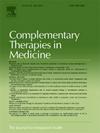Long-term farming lifestyle strongly associated with lower sarcopenia prevalence in older Adults: A cross-sectional study in an urban-rural transition zone
IF 3.5
3区 医学
Q1 INTEGRATIVE & COMPLEMENTARY MEDICINE
引用次数: 0
Abstract
Objective
In the context of rapid urbanization and escalating population aging, lifestyle factors play a critical role in sarcopenia development. This study aimed to clarify the prevalence of sarcopenia in elderly adults in the urban-rural transition zone of southern Pudong, Shanghai, and explore the association between lifestyle factors (with a focus on long-term farming history) and sarcopenia.
Methods
A cross-sectional study was conducted between January and November 2024, recruiting 654 community-dwelling individuals aged ≥ 60 years (mean age 69.43 ± 3.42 years) via convenience sampling from local health centers. Sarcopenia was diagnosed according to the 2023 Chinese Consensus criteria, based on assessments of muscle mass using bioelectrical impedance analysis (BIA), grip strength, and gait speed. Information on demographics, comorbidities, and pre-retirement primary occupation (categorized as farming vs. other non-farming) was collected through structured interviews. A farming lifestyle was defined as having engaged in agriculture as a primary occupation for at least 20 years. Multivariate logistic regression was used to identify independent factors associated with sarcopenia.
Results
The overall prevalence of sarcopenia was 6.42 % (42/654), with no significant difference between sexes (6.21 % in men vs. 6.63 % in women, P = 0.841). In univariate analysis, a history of farming (P < 0.001) and diabetes (P < 0.001) were significantly associated with sarcopenia. After adjusting for potential confounders in the multivariate logistic regression model, a long-term farming history emerged as a strong, independent protective factor against sarcopenia (adjusted Odds Ratio aOR = 0.050, 95 % Confidence Interval CI: 0.021–0.119, P < 0.001). The association between diabetes and sarcopenia was no longer statistically significant in the adjusted model (aOR = 0.749, 95 % CI: 0.293–2.088, P = 0.545).
Conclusion
The prevalence of sarcopenia in this urban-rural transition zone is lower than in highly urbanized centers in China. A long-term farming lifestyle is strongly and independently associated with a reduced risk of sarcopenia in this population. This finding highlights the potential protective effects of traditional agricultural lifestyle patterns and suggests that public health strategies for sarcopenia prevention should prioritize integrated, activity-diverse, and culturally relevant interventions.
长期的农业生活方式与老年人较低的肌肉减少症患病率密切相关:城乡过渡区的横断面研究。
目的:在快速城市化和人口老龄化加剧的背景下,生活方式因素在肌肉减少症的发生中起着至关重要的作用。本研究旨在了解上海浦东南部城乡结合部老年人肌肉减少症的患病率,并探讨生活方式因素(重点关注长期农业历史)与肌肉减少症之间的关系。方法:采用横断面研究方法,于2024年1月至11月,通过方便抽样从当地卫生中心招募654名年龄≥60岁(平均69.43±3.42岁)的社区居民。骨骼肌减少症是根据2023年中国共识标准诊断的,基于使用生物电阻抗分析(BIA)评估肌肉质量,握力和步态速度。通过结构化访谈收集有关人口统计、合并症和退休前主要职业(分类为农业与其他非农业)的信息。农业生活方式被定义为从事农业作为主要职业至少20年。采用多变量logistic回归确定与肌肉减少症相关的独立因素。结果:骨骼肌减少症总体患病率为6.42%(42/654),性别差异无统计学意义(男性为6.21%,女性为6.63%,P=0.841)。结论:城乡结合部的肌肉减少症患病率低于中国高度城市化的中心地区。在这一人群中,长期的农业生活方式与肌肉减少症的风险降低密切且独立相关。这一发现强调了传统农业生活方式的潜在保护作用,并建议预防肌肉减少症的公共卫生策略应优先考虑综合的、活动多样化的和与文化相关的干预措施。
本文章由计算机程序翻译,如有差异,请以英文原文为准。
求助全文
约1分钟内获得全文
求助全文
来源期刊

Complementary therapies in medicine
医学-全科医学与补充医学
CiteScore
8.60
自引率
2.80%
发文量
101
审稿时长
112 days
期刊介绍:
Complementary Therapies in Medicine is an international, peer-reviewed journal that has considerable appeal to anyone who seeks objective and critical information on complementary therapies or who wishes to deepen their understanding of these approaches. It will be of particular interest to healthcare practitioners including family practitioners, complementary therapists, nurses, and physiotherapists; to academics including social scientists and CAM researchers; to healthcare managers; and to patients. Complementary Therapies in Medicine aims to publish valid, relevant and rigorous research and serious discussion articles with the main purpose of improving healthcare.
 求助内容:
求助内容: 应助结果提醒方式:
应助结果提醒方式:


